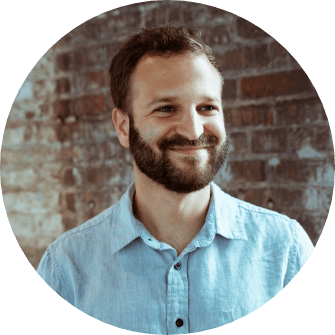Using Google Ads Automation to Scale Revenue for B2B, eCommerce, and DTC Brands
A challenging, but endlessly exciting, part of being a growth marketing agency is the fact that you have to constantly adapt to the ever-changing landscape of marketing in the digital age.
Best practices can change quickly. Industries ebb and flow based on minor details. Technology rapidly revolutionizes the ways we think about growth as a whole.
We are always on our toes, ready to dive into the newest industry tactics. Armed with the tools to test, learn, and retest. In recent years, this is perhaps most present in the way we think of automation.
Automation, especially on Google Ads, has grown exponentially over the last few years, pushing more manual and intensive growth strategies to the curb. It used to be an option for marketers. Something you can use to supplement your overall marketing efforts. Automation is now becoming the norm and default. Here at Tuff, we have made a pointed effort to test, learn, and embrace the new changes Google throws our way.
Our PPC strategies have adapted and we have been able to find immense success. Here’s a look behind the curtain of our work with automation for our partners in the B2B, eCommerce, and DTC space.
Scaling Leads In The Mental Health Space With MyWellbeing
It’s not every day that you can look at reporting month over month, and see positive results on every single KPI across your Google Ads account, but this is exactly what we saw for our partner, MyWellbeing, a Mental Health Startup with a mission of connecting people to a therapist that’s right for them.
While capitalizing on Google’s state of the art automation techniques, we were able to:
- Scale spend over 75%
- Drop our Cost Per Lead 40%
- Bring in 190% more conversions.
Here’s how we went about tackling this kind of growth from November to January:
Our early focus in the account came in two parts for MyWellbeing. The first was to improve our existing Responsive Search Ad copy. A big thing to keep in mind is the coordination between Keywords you target, Headlines you have in your Ad Copy, and the specific copy you include in your landing page. When you are able to match all three of these together, they work perfectly in harmony to attract not only more clicks, but the right clicks. More relevant ads = more relevant audience.
This strategy allowed us to raise all current Ad Ranks that received a Poor or Average score, to Good and Excellent. In turn, we:
- Increased our CTR and Impression share by over 10% while also taking substantial steps forward with Time On Site metrics. Increased pages per session by 58% while the Average Session Duration jumped another 30%.
When you can focus on more relevant ads, and it resulted in a more engaging audience.
Our second step in utilizing automation to the fullest was to transition our bidding strategies from Enhanced CPC, to a Max Conversions strategy with a target CPA. By this time, our account had an abundance of conversion history bringing in over 500 leads a month. This makes the transition a no-brainer; when Google is equipped with this amount of data in an account, the algorithm does it’s best work.
Not including all of the big wins mentioned above, this is the KPI performance we were able to achieve comparing November to January:
- Cost increased 77%
- CVR increased 100%
- Leads increased 187%
- Cost Per Lead decreased 40%
The short of it? We scaled and we scaled efficiently.
Our biggest success was in our largest campaign that focused specifically on a New York audience. This is where a vast majority of qualified leads come from. In this short span of time, using automation to the fullest, this campaign saw a Conversion Rate increase of over 300% with 11% less spend across Google. We have built a really good foundation to build off and it is only up from here.
Achieving a 14 ROAS with QuietKat
We had the opportunity to test one of Google’s newest automation techniques, Performance Max Campaigns, with our partner QuietKat, an electric bike retailer based out of Colorado looking to scale spend and revenues aggressively over the course of December,
With QuietKat having plenty of data, creatives, and budget, we built out a Performance Max Campaign that went live in December 2021. On the same day, the campaign recorded a last-click conversion for a ROAS of 5.19. At the end of the first week, our campaign had a ROAS of 4.56. We usually like to allow new campaigns (especially new campaign types) at least a week or 2 to gather data and insights to inform our next steps. The following week, the Performance Max campaigns’ ROAS skyrocketed to 13.93. The week of Christmas.
With the holiday season behind us, we scaled down – reducing this campaigns’ budget by ~50% WoW; ROAS continued to climb, to 14.95. Based on our early performance with the Performance Max campaign type and QuietKat’s 2022 budgets finalized, we strived to hit the ground running in January by increasing the Performance Max budget by more than 400%. ROAS fell, but was still healthy at 3.60, which set QuietKat up to have a strong January in what is typically a slow month due to weather and the preceding holiday sales numbers.
Performance Max, and automation as a whole, will remain a significant part of our paid media growth strategy for the foreseeable future.
Decreasing Cost Per Sale for DTC
For our partner, an early stage DTC brand, increasing our scale while maintaining efficiencies in cost per sale metrics has always been at the forefront of our partnership. This company is the world’s first plant-based ‘farmacy’, offering 100+ adaptogen and herb blends to treat modern day ailments. Toward the end of Q4 2021 and the beginning of Q1 2022, we’ve begun to more aggressively test Google’s automated bidding strategies and campaign types to help us achieve this overarching goal.
With the rollout of Performance Max across all Google Ads accounts, we quickly realized this campaign type may work wonders for an eCommerce brand that has historically performed very well with Smart Shopping campaigns.
In December, our initial shift away from Smart Shopping to Performance Max took place and produced excellent results for our most important metric, Cost Per Sale, dropping 11.72% vs. November. With initial results looking strong, we continued to lean heavily into Performance Max, scaling more aggressively to begin the new year.
In January 2022, we experienced our largest increase in traffic from Google Ads MoM at 47.41%, with only a 2.6% increase in spend. This was due in large part to a full shift away from Smart Shopping into Performance Max. With traffic increasing and CPCs decreasing, we were also very happy to report that CPS also dropped 16.67% – an even larger decrease than we experienced in December – while overall purchases from Google Ads increased 23.14%. The shift to automation was paying off.
Outside of Shopping-first campaigns, we began to leverage Dynamic Search Ads campaigns more effectively by segmenting out our DSA campaigns by non-branded, in which we used the brand terms as a negative keyword, and a branded products focus campaign, in which we used the product landing pages as our DSA campaign targets. The results so far have been excellent, with our non-branded DSA campaign driving by far the lowest CPS we’ve seen across all of our non-branded search campaign attempts while helping us identify non-branded terms that are high-converting at low average CPS. Additionally, our branded product focused DSA campaign has driven the lowest CPS we’ve seen outside of a pure brand-name target search campaign.
Embracing Automation
Automation is constantly improving, allowing us to continually test new strategies for all of our partners here at Tuff. No matter the industry, we are seeing results that speak for themselves. Whether you are working in ecommerce, fintech, or health & wellness, there are aspects of automation that, when used correctly, can have a drastic impact on your growth. This kind of continued testing and learning, using all of the tools at our disposal, is key to our success.

Chris is a PPC Strategist based in Nashville, Tennessee. When he’s not scaling Google Ads & YouTube campaigns, he enjoys longboarding, tinkering with automation tools, and a little bit of gaming.






